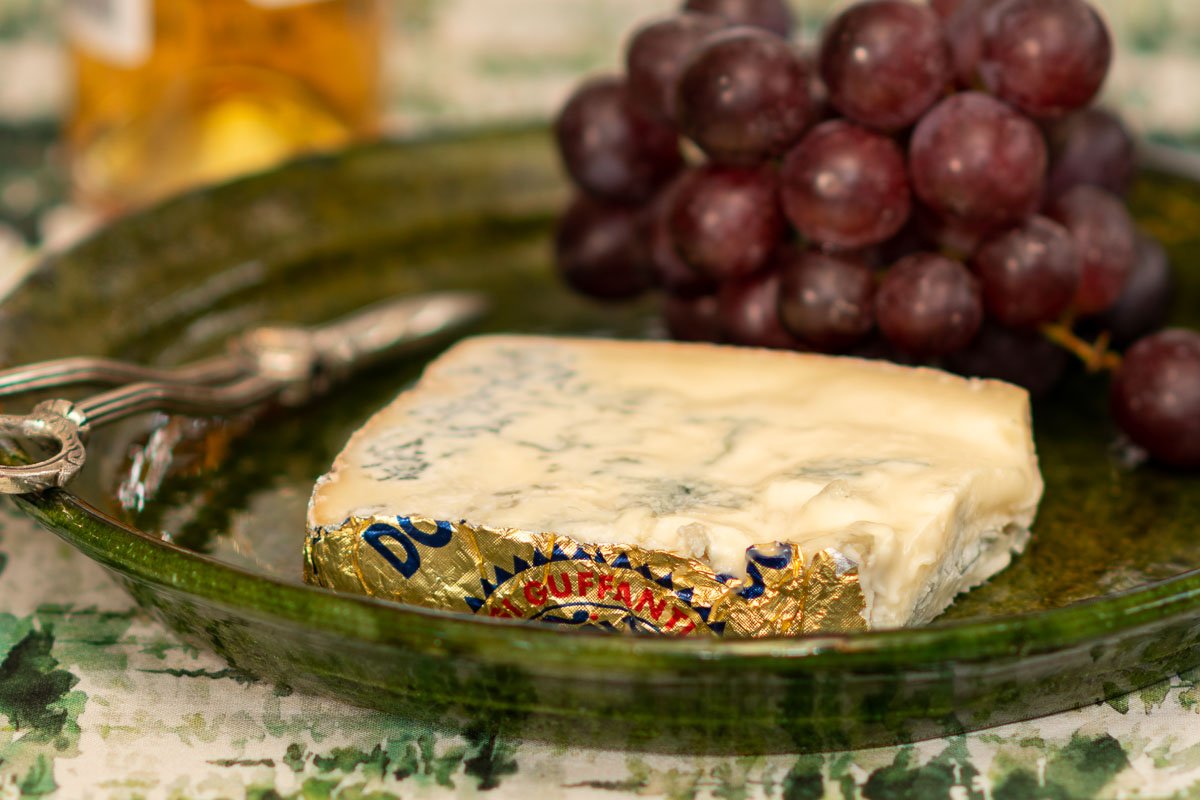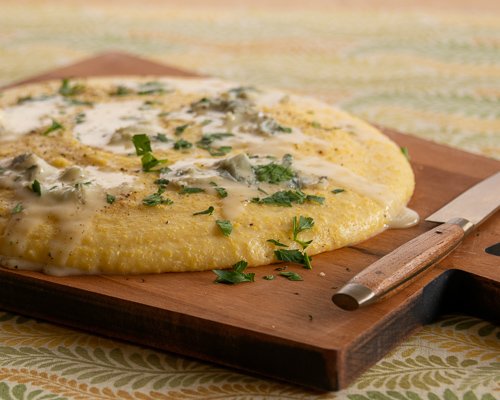I used to think of Gorgonzola Dolce as a “starter blue”—the white Zinfandel of blue cheese. It’s so moist, mellow and likeable, perfect for people who are wary of blue cheese and don’t enjoy the spicier types. “They’ll get there eventually,” I would think, just as pink-wine drinkers usually advance to more complex reds at some point. But there’s a reason Dolce (“sweet”) outsells traditional Gorgonzola by almost ten to one. It’s a pleaser and, to be honest, I often prefer it myself. On polenta it’s sublime.
Gorgonzola is one of Italy’s oldest cheeses, its origins uncertain but going back centuries at least. The Dolce style is much more recent. My reference books say it was developed after World War II to accommodate the popular taste for creamier, more delicate cheeses. Fair to say it has been a success. Among Italy’s PDO cow’s milk cheeses, Gorgonzola is third by volume (after Grana Padano and Parmigiano Reggiano), and the Dolce style now accounts for 90 percent of that.
The remaining 10 percent is known variously as Gorgonzola piccante, Gorgonzola naturale or mountain Gorgonzola. It is firmer, dryer and much bolder in flavor. The Gorgonzola piccante that I find at American cheese counters is often too potent for me. I suspect it suffers in transit and hangs around cheese shops too long.
But, ah, that Dolce. Made with a different Penicillium strain, with more moisture left in the curd, and matured for less time (minimum 50 days versus minimum 80 days), it is almost custardlike when ripe. It smells like Saltine crackers, spreads like cream cheese and melts like a dream on toasted bread. (Try a walnut loaf.) Look for Dolce that has obvious creamy pockets, almost like melting ice cream. If it looks firm or smells of ammonia, pass it by.
Dolcelatte is not Gorgonzola Dolce. It is a mild, moist Italian blue cheese with a trademark registered to the Galbani Company. As far as I can tell, Dolcelatte is not sold in the U.S. although I believe it used to be. Oldtimers, am I wrong about that?
Stir Gorgonzola Dolce into a butternut squash or mushroom risotto. Spread it on crostini and serve with a salad. Or—my favorite—put fat slices on steamy polenta and watch it melt.
Soft Polenta with Gorgonzola Dolce
Crazy cheesy good: Polenta with Gorgonzola Dolce
For a richer result, substitute 1 cup milk for some of the water or broth. If you have any mascarpone in the fridge, whisk in a couple of tablespoons at the end, when you add the butter. Use the lesser amount of liquid if you like a stiffer polenta.
4 to 5 cups water or broth
Sea salt
1 cup polenta
2 tablespoons unsalted butter, or more if desired
4 ounces Gorgonzola Dolce, or more if desired
In a heavy saucepan, bring the water or broth and a generous pinch of salt to a simmer over medium heat. Gradually whisk in the polenta. When the mixure becomes too thick to whisk, switch to a wooden spoon, scraping the sides of the pan frequently with a rubber spatula. Cook for at least 45 minutes, stirring often and thinning with boiling water or broth if the polenta gets too stiff. If you have the patience to cook for 1 hour, the polenta will be even creamier.
Taste for salt, then stir in the butter. Pour the polenta onto a wooden board, spreading it with a spatula. Let the polenta settle and firm for a few minutes, then top with slices of Gorgonzola, using as much as you like. Serve immediately.
Serves 2 to 4


